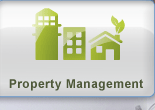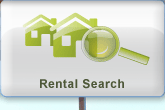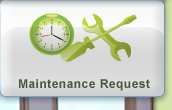| |  | This checklist and troubleshooting guide is provided to help you solve some of the most common problems encountered by our tenants. For maximum benefit you should use the list as a how-to guide before calling for service. Because we have properties in every configuration imaginable, we must cover each subject in detail. We must also assume that you are not familiar with the items covered. If we are too basic, we do apologize. Jump to a Topic: Air Conditioning Baseboards Dishwashers Disposals Electrical Panel Electric Stove Furnaces Heat Pumps Other Problems Water Heater Water Shut Off
WATER SHUT OFF -
Look for the water shut-off as you move into the property. You definitely don't want to go hunting for it after a flood has started! -
The water shut-off is a small single faucet that shuts off all water in the house. Possible locations: -
garage -
near the water heater (not at the top) -
in a closet -
under the kitchen sink -
in the utility room -
If you are in an older home, it may be a piece of iron in the floor of a closet -
In case of emergency, try the shut off. -
Sometimes the water does not stop immediately. -
Sometimes the water slows to a trickle, but does not stop. This is still preferable to a flood. ELECTRICAL PANEL -
Locate the panel and determine if it uses fuses or circuit breakers. -
Fuse panels are common in homes built before 1980. Two types of fuses will be in the fuse box: -
Cartridge type - Cartridge fuses resemble small drawers. To check the cartridge fuse, pull the fuse holder out of the little drawer. Usually a blown fuse will appear burned or ruptured. However, sometimes a blown fuse will appear to be normal, and the only way to check it is to replace it with a new one. CAUTION 1: DO NOT PRY THE PRONGS OF THE FUSE HOLDER APART. Simply slide the fuse out towards the open end of the holder. CAUTION 2: When you replace the fuse holder, it must be right side up. If you put it in upside down, the circuit will be off and the electricity still won't work. -
-
-
Screw-in type - a fuse wire will be visible or you may see a red button in the cap of the fuse. If the fuse wire is broken, replace the fuse. If the red button is popped, push it in. 2. Circuit breakers look like switches. -
-
To reset your circuit breakers, move the switch from OFF to ON. If you aren't sure which switch popped, move all of them from ON to OFF and back to ON. -
Ground Fault Interrupters (GFI): Some homes have a master circuit breaker which detects voltage changes. It is usually marked with a red, yellow, or black button. -
Possible locations: -
Next to or with the main circuit breaker panel -
In one of the bathrooms -
Outside of the home, along an exterior wall. ELECTRIC STOVE -
If the stove is off, check the fuse or circuit breaker. -
Self Cleaning Ovens - DO NOT USE cleaners like Easy Off or Mr. Clean. -
Continuous Cleaning Ovens -
Clean with mild soap & water solution. -
DO NOT let grease accumulate at the bottom of the oven! Please line the bottom of the oven with heavy duty aluminum foil or a shallow drip pan. DO NOT USE regular tin foil - it will catch on fire. DISHWASHERS - If used less than once a week, the seals may dry up and ruin the motor when the dishwasher is used again. DISPOSALS -
If the motor just buzzes, turn it off. -
Check for clogs in the sink. -
Check the circuit breaker. -
If the blades turn easily by hand but not with power, then call for service. FURNACES - Gas and oil furnaces usually have a red emergency shutoff switch in sight of the furnace. The emergency switch is often mistaken for a light switch. Check the switch first before calling for service. OIL HEAT -
-
It is best to have a service contract with an oil company. Most companies offer budget payments to customers with service contracts and will automatically fill your tank when needed. -
Do not let your tank run dry! It may cause damage and require a service call to restart the furnace. -
If the furnace stops working: -
Check the RED switch first. -
Next, check the furnace circuit breaker or fuse. -
Third, press the reset button on the furnace motor. -
Is there oil in the tank? -
If none of these suggestions helps, call for service. GAS HEAT -
-
For both Old and New Gas Furnaces, the first thing to look for in case of trouble is the red emergency switch. Next, check the pilot light. Finally, call for service. -
Old Gas Furnaces -
Old gas furnaces have a pilot light that burns continuously. A safety device keeps the gas from being turned on at the burner if the pilot light has gone out. -
Relighting the Pilot Light: -
Should be easy! -
Most furnaces have a switch that reads OFF-PILOT-ON. -
To light the Pilot, turn the switch to OFF. -
Next, turn the switch to PILOT and light it. You will probably have to exert downward pressure on the selector knob and hold it down for several seconds or even a minute after the light looks lit. -
Release the downward pressure and the light should remain lit. If it goes out, repeat the instructions above. -
Once lit, move the selector from PILOT to ON. -
NOTE: Some selectors have red buttons that must be held down after lighting the Pilot. -
NOTE 2: If you haven't looked your furnace over before the pilot goes out, you might not be able to figure out where the pilot light is located because it is dark in there. -
New Gas Furnaces -
Newer furnaces have automatic devices, so no pilot is required. Call for service if the furnace will not light. HEAT PUMPS -
Heat pumps are the most economical heating method in a climate like Hampton Roads - if used properly. For best results, set a comfortable temperature and LEAVE THE CONTROL ALONE. -
Air coming through the vents is colder than body temperature. -
DO NOT stand on the heat vent to warm up, it may obstruct system function. -
EXTREME COLD: Using the Emergency Heat is very expensive! It is faster and more effective in extreme cold to use a space heater. -
Don't be alarmed if the outside unit has ice or steams on a cold day. It's not an emergency, but please let your Property Manager know if you see ice forming.
BASEBOARD HEAT -
Be sure that air is free to flow under the radiator unit. If airflow is blocked by a thick rug, the unit will not heat properly. -
Keep the door closed if you are only heating one room. Cold air will rush in and disrupt the thermostat.
WATER HEATER
-
GAS: If you have a gas water heater, learn to light the pilot light. Follow the same directions as given above for older gas furnaces. -
ELECTRIC: -
If you have an electric water heater, look for a timer. -
Learn how to set the timer. -
Note which fuse or circuit breaker controls the unit.
AIR CONDITIONERS
-
Poor Cooling - The unit runs, but is not cooling very well: -
Check the filters. Vacuum or replace if they are dirty. -
If air flow is still inadequate, call the Property Manager for service. -
Does Not Run - If the unit doesn't run at all: -
Check the red switch. -
Check the fuse or circuit breaker. -
If unit still doesn't operate, call Property Manager for service. -
Water Drips - If the unit is working, but water is dripping or running on the floor: -
Shut the unit off and clear the condensation drain. -
Some drains are very easy to clean. Use a Shop Vac or garden hose to blow out the line. If you're scared to try this yourself, call the Property Manager for service. -
DO NOT operate the unit until the clogged drain is cleared! The unit will continue to produce water and the property or your belongings could be damaged.
****IMPORTANT NOTES FOR FREEZING WEATHER****
-
Always leave the heat ON. -
Close any crawl space vents around the bottom of the exterior walls of the house. -
Let both hot and cold faucets run slowly on very cold nights. -
Well pumps must have water drained from the system prior to freezing weather. Some may be disconnected and stored in your garage or shed. OTHER PROBLEM AREAS -
Air Filters: Check for their location when you move in. Change them monthly or more often, as necessary, to improve furnace or AC performance and lower bills. -
Hardwood Floors: Only use soaps that are especially designed for hardwood cleaning. -
Fiberglass Tubs: Use SoftScrub or similar on tubs, sinks or showers. -
Carpets: All floors, including carpets, should be professionally cleaned at the termination of the lease. -
Walls: Do NOT use contact paper or sticky paper on walls, doors, or cabinets. -
Wood Stoves: Ask if there are any special instructions. Generally, wood stoves use hard woods only. -
Fireplaces: -
Please do not use as an incinerator for Christmas wrappings, cardboard, etc. These sometimes contain dangerous chemicals. -
Before your first fire of the season, the fireplace should be inspected by a professional chimney sweep. -
Please burn hard woods only. This avoids buildup of tar and soot. -
Bugs & Vermin: -
The property may be under a termite contract which includes annual treatments and inspections. -
Please send us a written notification if you are concerned about the termite treatments, a termite problem, etc. -
Small black ants are common in Hampton Roads. Please don�???�??�?¢??t be alarmed if you see them. If they become a problem, you can pick up a product called TERRO at Lowe's or Home Depot. Follow the package instructions and the ants should be gone within 48 hours. -
It is the tenant's responsibility to combat occasional pests. Occasional pests are -
water bugs -
roaches -
bugs -
spiders -
pill bugs -
mice -
It is the Property Manager's responsibility to deal with furrier creatures. We will handle -
squirrels -
birds -
rats -
raccoons -
bats | | |








